Canon RF 24-105mm f/4-7.1 IS STM lens
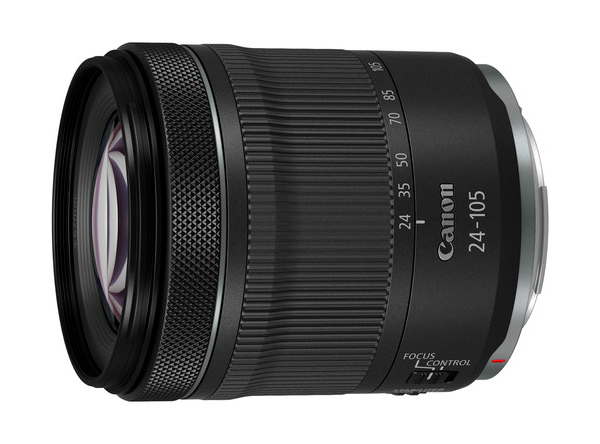
In summary
Canon’s RF 24-105mm f/4-7.1 IS STM lens represents a winning combination of size, weight, versatility and price.
Even in relatively low light levels, where the slow maximum apertures at longer focal lengths can restrict hand-held shooting, the built-in stabilisation enables users to shoot with the camera and lens hand-held at slow shutter speeds with good shooting technique and achieve reliable results.
Full review
Announced just before CP+ in February 2020, the RF 24-105mm f/4-7.1 IS STM lens is the second ‘affordable’ kit lens for Canon’s full-frame R-series cameras. Like the RF 24-240mm f/4-6.3 IS USM kit lens, it has been designed to be relatively compact and lightweight kit lens as well as affordably priced. Covering a popular and versatile 4.4x zoom range, it can be used for a wide range of subjects. This lens boasts five-stop stabilisation that makes it ideal for travel and street photography.

Angled view of the RF 24-105mm f/4-7.1 IS STM lens without end caps. (Source: Canon.)
The optical design of this lens, shown below, consists of 13 elements in 11 groups and includes one aspherical element. Like other RF lenses, the RF 24-105mm f/4-7.1 lens supports in-camera corrections for distortion, peripheral illumination and chromatic aberration of magnification. Users can also take advantage of the Digital Lens Optimizer (DLO) function in Canon’s EOS R cameras.
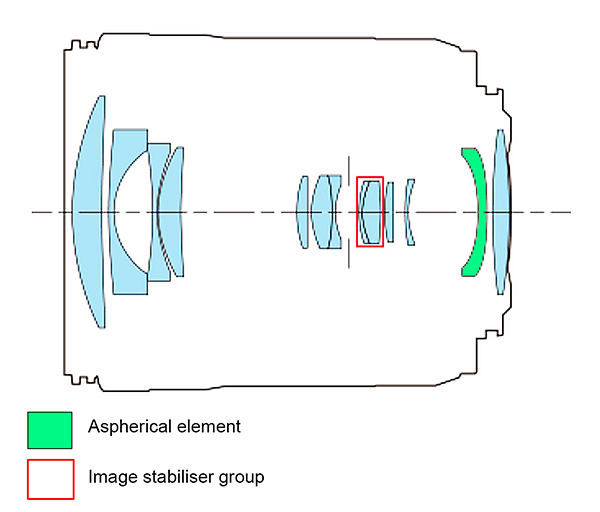
Unlike most other RF lenses (but like the RF 24-240mm f/4-6.3 IS USM kit lens, the focus ring doubles as the control ring. A slider switch on the side of the lens enables users to switch quickly between the Focus and Control positions, the latter enabling users to set the ring to adjust aperture, shutter speed, ISO or exposure compensation.
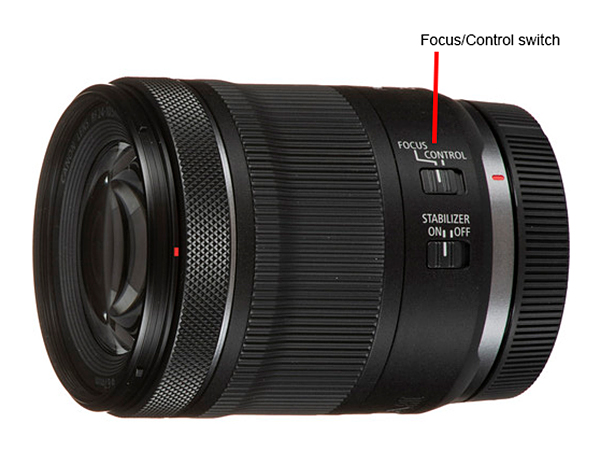
The Focus/Control switch on the RF 24-105mm f/4-7.1 IS STM lens. (Source: Canon.)
Autofocusing is driven by a stepping motor which is controlled from the camera. This enables the lens to support the fast, high-precision AF algorithms in the latest cameras as well as using the same AF sensors. Focusing is quiet enough to make this lens suitable for use when recording video and responsive enough to suit stills shooting.
With an overall weight of just 395 grams, this lens is the ideal partner for the EOS RP camera, which we used for our tests.
Who’s it For?
The 24-105mm zoom range is popular with photographers because it covers a wide variety of subject types from landscapes through portraits to relatively close action. The new lens provides an alternative to Canon’s more expensive RF 24-105mm f/4 L IS USM lens, which covers the same zoom range with a constant f/4 maximum aperture but is weather-sealed and has a more complex optical design that makes it 305 grams heavier. That lens sells for more than double the price of the RF 24-105mm f/4-7.1 IS STM lens.
Most people will acquire this lens as a kit lens for an EOS R-series camera and that’s likely to be the cheapest and most convenient way to purchase it (although it is available to buy separately). Purchasers should check for firmware updates to make sure this lens is fully supported by their camera.
The RF 24-105mm f/4-7.1 IS STM lens can focus closer than the f/4 lens across its entire zoom range. And focusing is fully internal, so you can fit and use angle-critical filters like polarisers and graduated filters without having to constantly re-adjust them.
The other alternative kit lens is the RF 24-240mm f/4-6.3 IS USM, which covers a 10x zoom range. Offering similar features to the RF 24-105mm f/4-7.1 IS STM lens, it’s almost twice the weight and has a minimum focus of 50 cm at 24mm, extending to 78 cm at 240mm, with a maximum magnification of 0.26x.
If you plan to acquire the RF 24-105mm f/4-7.1 IS STM, we’d suggest buying the EW-73D lens hood to go with it. The branded version is pretty pricey at around AU$50 (but more in some outlets) for what is essentially a couple of dollars worth of moulded plastic so we suggest you check out some of the third-party alternatives that are available online for roughly half the price.
Build and Ergonomics
Going by the end caps, this lens is made in the company’s factory in Taiwan. It is mostly made from engineering-grade polycarbonate plastic but, unlike many kit lenses, it has a solid metal mount. The review lens felt well balanced on the EOS RP camera on which it was tested.
The combined Focus/Control ring is located right at the front of the outer barrel. It’s about 12 mm wide and almost totally covered with hatching to provide a secure grip. A narrow grey band along its trailing edge separates it from the rest of the outer barrel.
Behind it is a fixed section of the outer barrel that is just under 5 mm wide and separates it from the zoom ring. The generous zoom ring is 37 mm wide and covered by a broad collar of thick, rubber-like ribbing, save for a 5mm wide unribbed section at its trailing edge where the focal length positions are stamped. These are lined up against a white mark on the fixed section of the lens immediately behind the zoom ring.
The lens uses a rotary zoom and zooming in extends the inner barrel by 47 mm as you go from 24mm to 105mm. As well as changing the focal length, this also changes the maximum and minimum aperture settings as shown in the table below.
| Focal length | Maximum aperture | Aperture changes at | Minimum aperture |
| 24mm | f/4 | 27mm | f/22 |
| 35mm | f/4.5 | 37mm | f/22 |
| 50mm | f/5 | 63mm | f/22 |
| 70mm | f/6.3 | 79mm | f/32 |
| 85mm | f/7.1 | 80mm | f/36 |
| 105mm | f/7.1 | f/40 |
Behind the zoom ring is a 24 mm wide fixed section of the lens that carries the two slider controls on the left hand side of the barrel, with the Focus/Control above the IS on/off switch. The outer barrel slopes inwards to end in the metal lens mount that attaches snugly to the camera body.
No zoom lock is provided and we found none was needed. The lens also lacks distance and depth-of-field scales and there’s no aperture ring because all these functions are controlled from the camera. Even switching between auto and manual focusing must be set via the camera’s menu.
Like other Canon kit lenses, the lens is only supplied with front and end caps. If you want a lens hood (which we recommend) you’ll have to invest in the optional the EW-73D lens hood, which typically sells for around AU$50. The LP1116 soft pouch is another optional extra.
Performance
Our tests of this lens on the EOS RP body confirmed our belief in its suitability for this lens. While the Imatest tests were conducted with all the in-camera corrections in our EOS RP camera enabled we also checked a selection of raw files captured simultaneously to identify areas that might be problematic.
The results of our tests showed the review lens delivered superior performance when compared with the average DSLR kit lens and slightly better performance on average than the RF 24-240mm f/4-6.3 IS USM lens. Even with JPEG files, the highest resolutions we obtained were above expectations for the resolution of the camera’s sensor. With CR3.RAW files even higher resolutions were obtained.
The best results were obtained between f/4 and f/9, depending on the focal length setting. Interesting, there was only a slight drop in resolution due to diffraction from about f/14, and resolution remained quite high at f/22. The graph below shows the results of our tests.
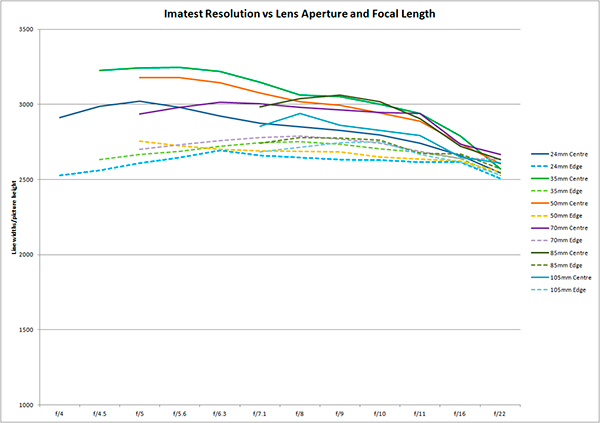
Because the EOS RP automatically corrects chromatic aberration in JPEGs, we also checked CR3.RAW files to gauge the extent to which it might actually affect images. But for both JPEG and CR3.RAW files, lateral chromatic aberration remained entirely within the ‘negligible’ band, indicated by the red line in the graph of the results of our tests below.
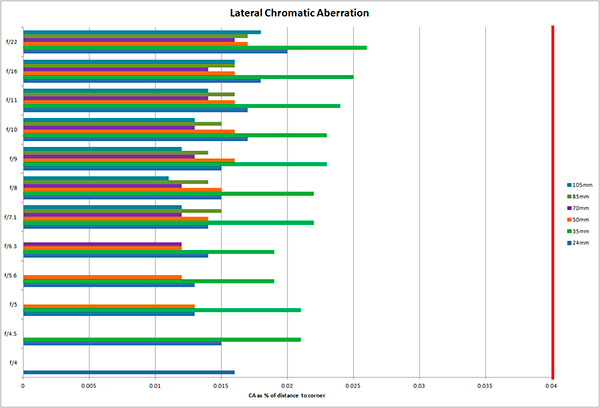
Aberrations like vignetting and distortion are also corrected automatically in JPEGs so we had to assess raw files to determine whether they were significant. Vignetting was very obvious in raw images as edge and corner-of-frame darkening between 24mm and 50mm, but became less obvious between 70mm and 105mm.
Uncorrected raw files also showed severe barrel distortion at the 24mm focal length but this was mostly corrected by 35mm and morphed into very slight pincushion distortion at 50mm which remained through to 105mm. This is not unusual with kit zooms and is easy to correct when converting raw files into editable formats.
Despite having no lens hood, the review lens was remarkably resistant to ghosting and flare and we were unable to force it to produce either in the test shots we took. However, we feel the use of a hood would be beneficial when shooting in strong backlighting.
Close-up capabilities were better than we expected for a kit lens, even at the 24mm focal length, where bokeh was much smoother than expected. Bokeh also remained surprisingly smooth at 105mm, despite the reduction of the maximum aperture to f/7.1. The ability to use the articulating screens on EOS R cameras, coupled with the effective image stabilisation makes this lens more versatile for close-ups than the average kit lens.
Autofocusing performance was also better than we expected and generally fast and very quiet. We encountered no instances of hunting for focus and no situations where the focus was misplaced.
The system was also able to lock onto moving subjects, even when they represented a very small section of the frame. An example is shown in the Samples section of this review. However, videographers should note that the review lens suffered from slight focus breathing. This caused a slight enlargement of the scene as the lens was focussed more closely.
Conclusion
We’ve nominated Canon’s RF 24-105mm f/4-7.1 IS STM lens for our Editor’s Choice rating because it represents a winning combination of size, weight, versatility and price. Even in relatively low light levels, where the slow maximum apertures at longer focal lengths can restrict hand-held shooting, the built-in stabilisation enables users to shoot with the camera and lens hand-held at slow shutter speeds with good shooting technique and achieve reliable results.
The cheapest way to purchase the RF 24-105mm f/4-7.1 IS STM lens is with an EOS RP camera, where it adds between AU$300 and $500 to the price of the camera body on its own. If you already have an EOS R-series camera and want to add this lens to your kit, prices through local online resellers range between about AU$550 and AU$730 so it pays to shop around.
It’s not worth shopping off-shore for either the lens on its own or the kit. B&H has the lens listed at US$399, which was equivalent to AU$507 when this review was published. Add in around AU$46 for GST and $66 for shipping and you’ll end up paying more than the average local price (GST included). B&H doesn’t ship the EOS RP kit with this lens to Australia.
[/wcm_restrict]
SPECS
Picture angle: 84 degrees to 23 degrees 20 minutes
Minimum aperture: f/22-f/40
Lens construction: 13 elements in 11 groups (including 1 aspherical element)
Lens mounts: Canon RF mount
Diaphragm Blades: 7 (circular aperture)
Weather resistance:
Focus drive: Stepping motor + lead screw
Stabilisation: Yes, 5 stops
Minimum focus: 13-34 cm (manual focus)
Maximum magnification: 0.5x (24mm, manual focus); 0.4x 105mm. AF)
Filter size: 67 mm
Dimensions (Diameter x L): 76.6 x 88.8 mm
Weight: 395 grams
Standard Accessories: Front and end caps
Distributor: Canon Australia; 1800 021 167
TESTS
Based upon JPEG images captured with the lens on the EOS RP camera.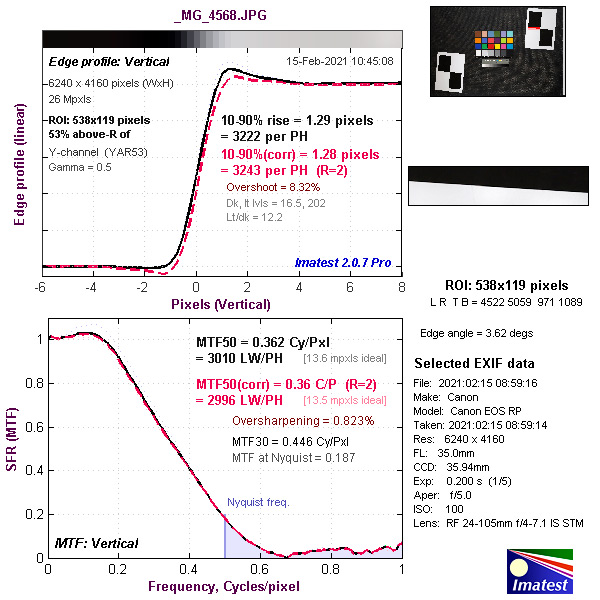
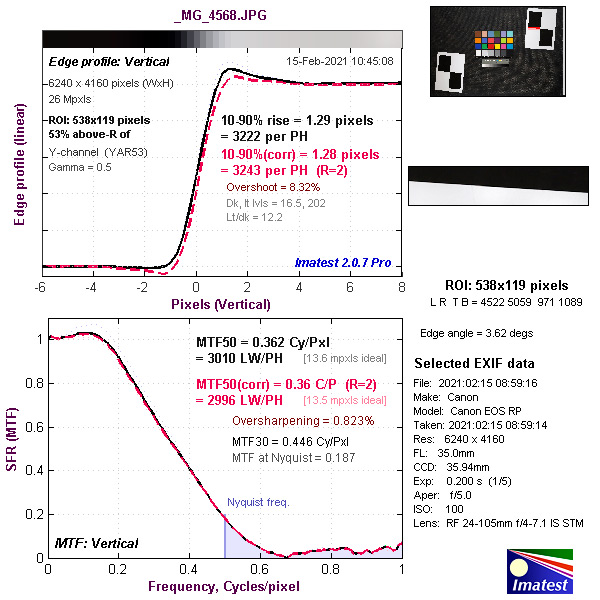
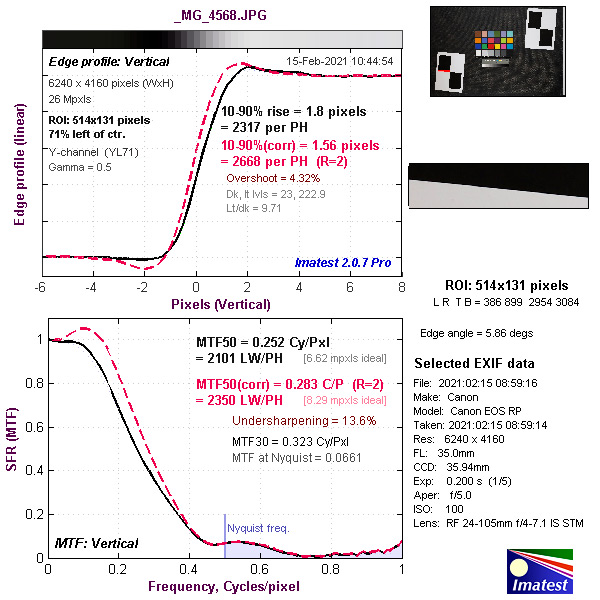
Based on CR3.RAW files recorded at the same time as the JPEGs above.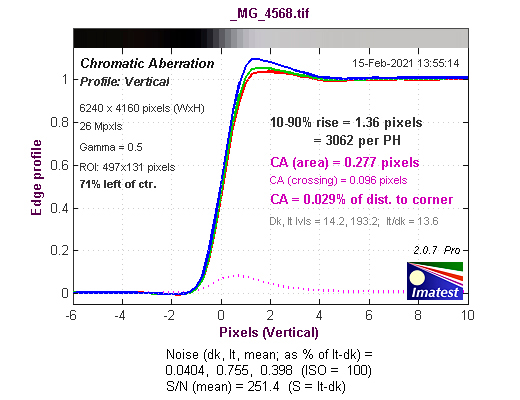
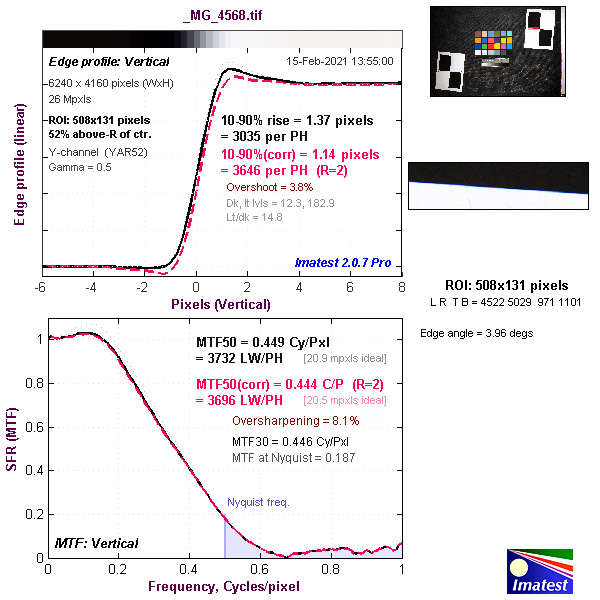
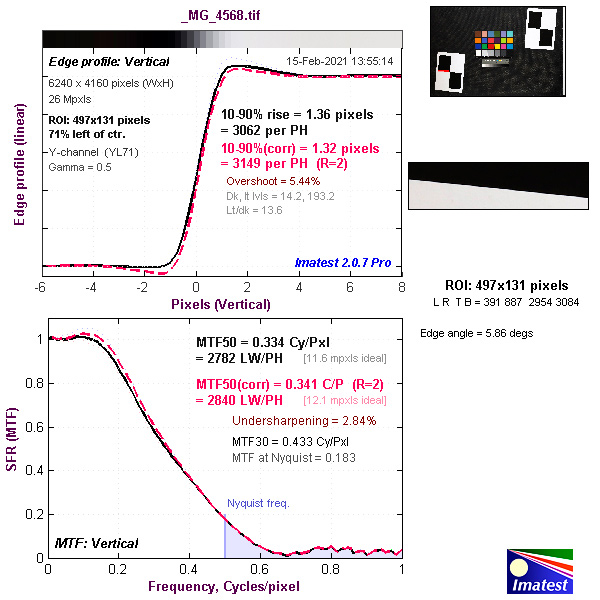
SAMPLES
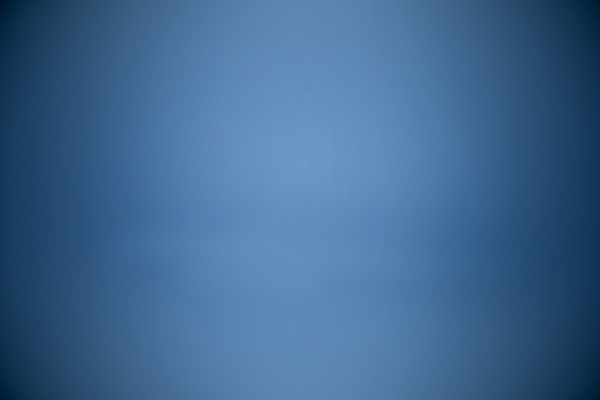
Vignetting at 24mm f/4.

Vignetting at 35mm f/4.5.

Vignetting at 50mm f/5.

Vignetting at 70mm f/7.1.

Vignetting at 85mm f/7.1.

Vignetting at 105mm f/7.1.
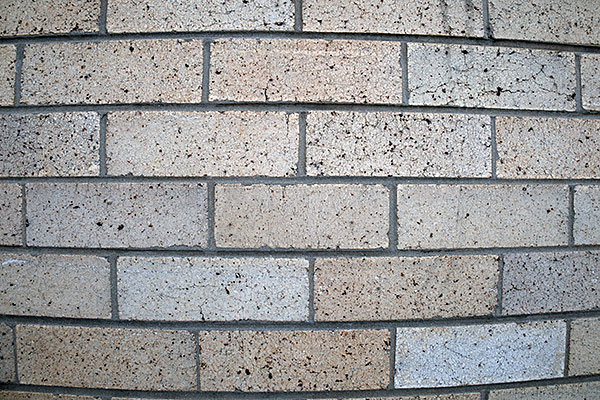
Rectilinear distortion at 24mm.
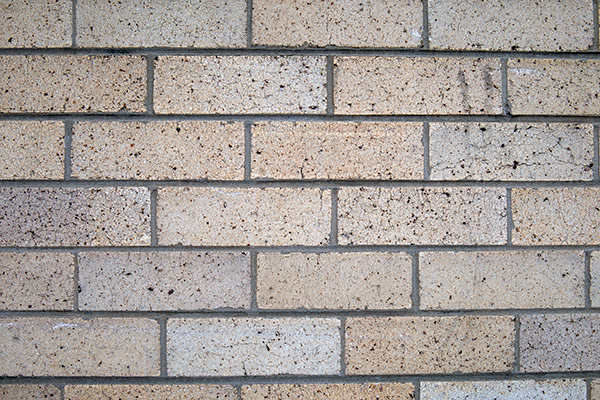
Rectilinear distortion at 35mm.
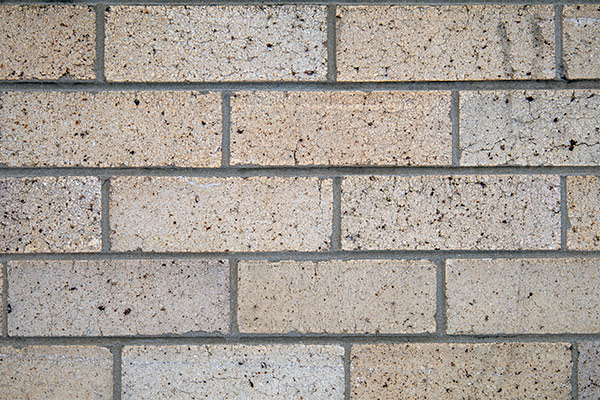
Rectilinear distortion at 50mm.
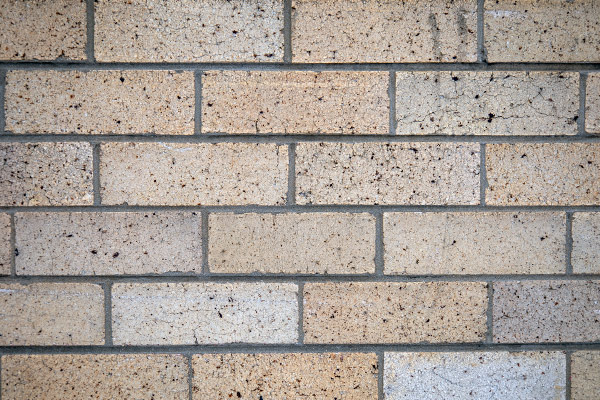
Rectilinear distortion at 70mm.
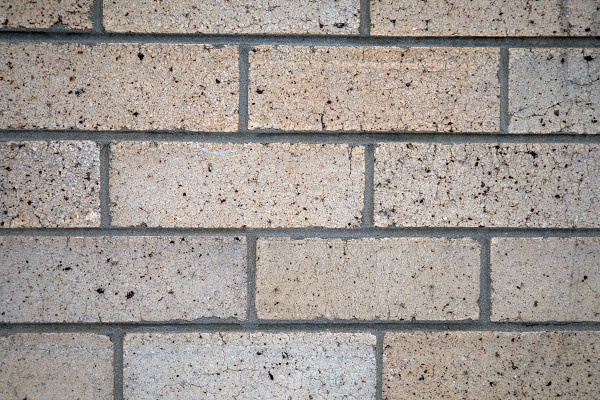
Rectilinear distortion at 85mm.
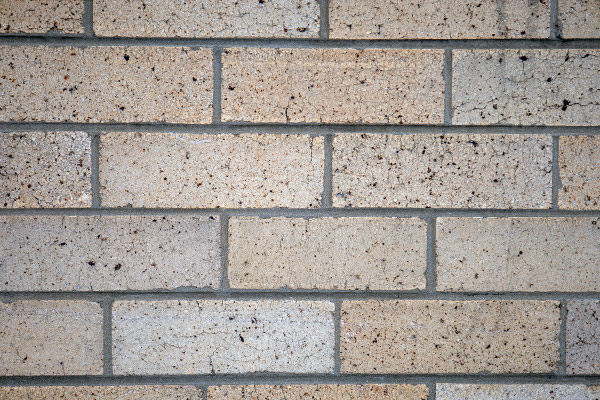
Rectilinear distortion at 105mm.
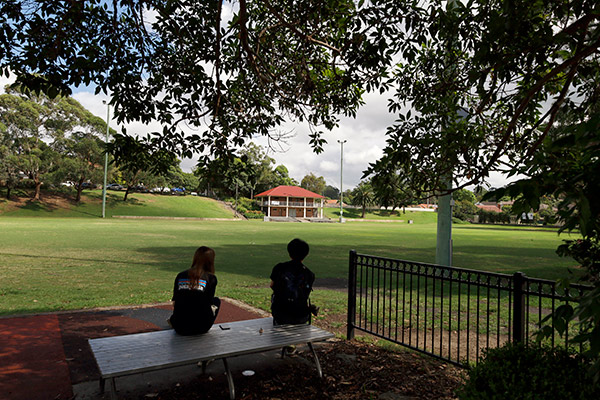
24mm focal length, ISO 100, 1/320 second at f/9.
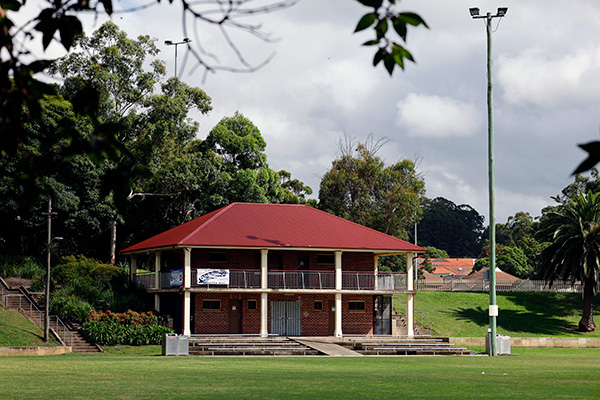
105mm focal length, ISO 100, 1/320 second at f/9.

24mm focal length, ISO 100, 1/60 second at f/8.

105mm focal length, ISO 100, 1/25 second at f/8.

Close-up at 24mm focal length, ISO 100, 1/4000 second at f/5.6.

Close-up at 105mm focal length, ISO 100, 1/2000 second at f/7.1.
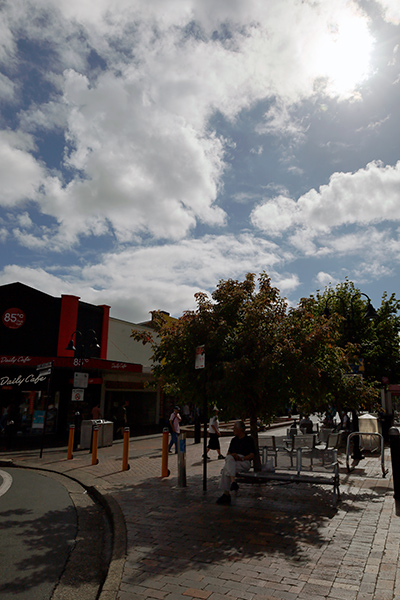
Very strong backlighting; 24mm focal length, ISO 100, 1/800 second at f/10.

Stabilisation test; 37mm focal length, ISO 100, 1/8 second at f/13.
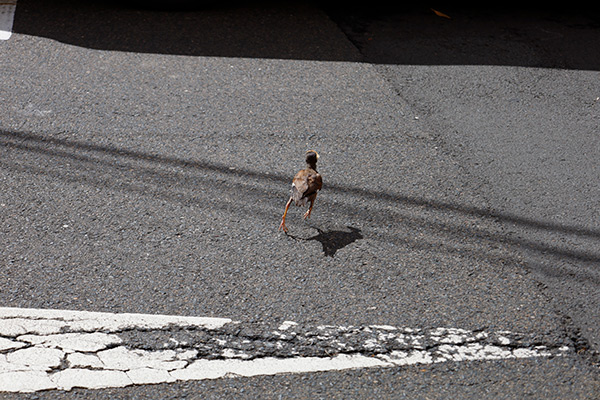
AF subject detection, moving subject; 105mm focal length, ISO 100, 1/400 second at f/7.1.

105mm focal length, ISO 100, 1/160 second at f/9.

105mm focal length, ISO 100, 1/100 second at f/8.

105mm focal length, ISO 100, 1/60 second at f/7.1.

40mm focal length, ISO 100, 1/160 second at f/7.1.

105mm focal length, ISO 100, 1/500 second at f/13.

105mm focal length, ISO 100, 1/160 second at f/8.
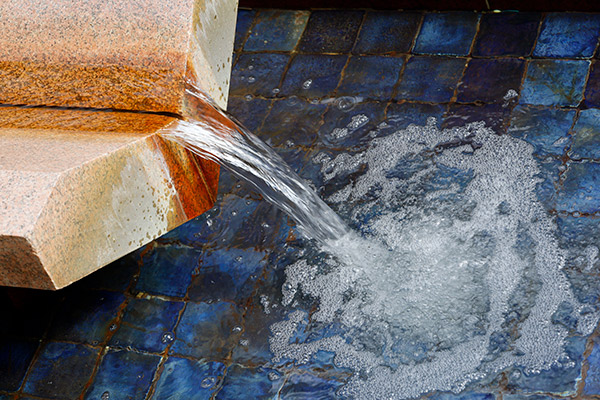
105mm focal length, ISO 100, 1/100 second at f/7.1.

105mm focal length, ISO 100, 1/250 second at f/10.

105mm focal length, ISO 100, 1/8 second at f/7.1.

105mm focal length, ISO 100, 1/60 second at f/8.

105mm focal length, ISO 100, 1/60 second at f/7.1.
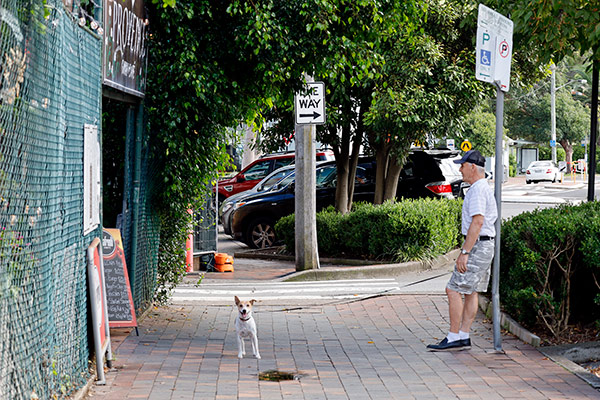
105mm focal length, ISO 100, 1/50 second at f/7.1.
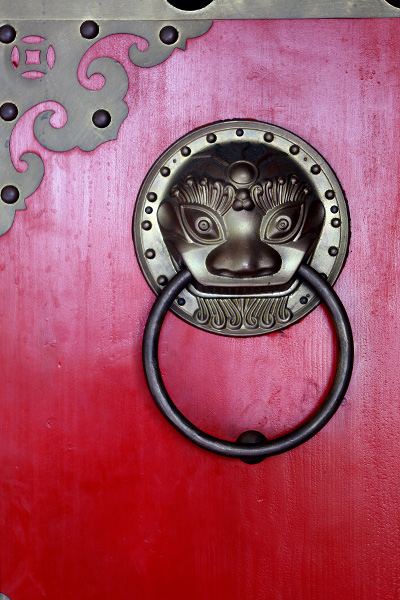
105mm focal length, ISO 160, 1/10 second at f/7.1.

24mm focal length, ISO 100, 1/320 second at f/8.

68mm focal length, ISO 100, 1/25 second at f/6.3.
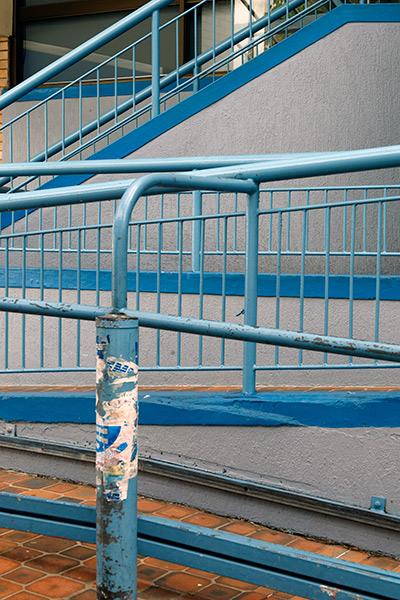
73mm focal length, ISO 100, 1/15 second at f/13.

63mm focal length, ISO 100, 1/30 second at f/6.3.
Rating
RRP: AU$640 (ASP); US$399
- Build: 8.5
- Handling: 8.8
- Image quality: 9.0
- Autofocusing: 8.9
- Versatility: 8.9




